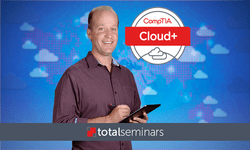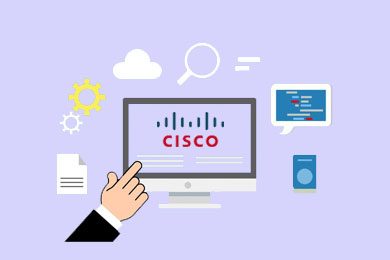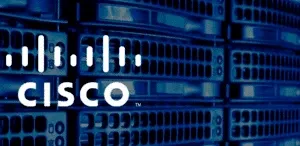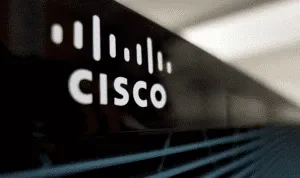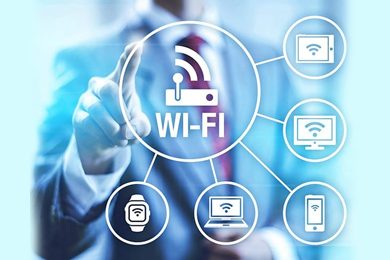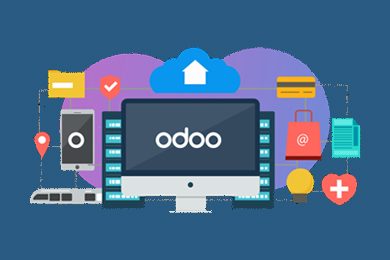This plan includes
- Limited free courses access
- Play & Pause Course Videos
- Video Recorded Lectures
- Learn on Mobile/PC/Tablet
- Quizzes and Real Projects
- Lifetime Course Certificate
- Email & Chat Support
What you'll learn?
- Implement appropriate security controls given requirements.
- Analyze system requirements to successfully execute workload migrations to the cloud.
- Determine proper allocation of cloud resources and apply necessary changes, based on performance data.
- Troubleshoot capacity, automation, connectivity and security issues related to cloud implementations.
- Apply appropriate technologies and processes, including automation and orchestration, to ensure desired system performance.
Course Overview
Mike Meyers and the Total Seminars Team, brings you this TOTAL: Cloud Computing / CompTIA Cloud+ Cert. (CV0-002) course with your instructor, Tom Carpenter.
This is NOT a boring voice over PowerPoint course. Tom speaks to you and presents the material in an engaging interactive style that will keep you interested and make it easier to understand. Check out the free sample lectures and you will see the difference.
Learn the basics of Cloud Computing and prepare for the CompTIA Cloud +Certification. Cloud+ is part of the CompTIA Infrastructure Pathway. Cloud+ is an intermediate level Network Specialist certification. The median annual salary for a Cloud+ certified tech is $74,300* and there are currently over 50,000 job postings* for techs with this certification in the US.
Job Titles that this training prepares you for include:
-
System's Administrator, Cloud
-
Network Engineer, Cloud
-
Network Administrator, Cloud
Are you looking to learn more about the Cloud and what it can do for you or your company? Maybe you've heard this buzzword, but don't know what it means to take your business and network solutions into the cloud. If you want to learn the basics of the Cloud on a pathway to AWS or Azure Certification this course will give you the foundational knowledge to begin your journey.
-
WHAT'S INCLUDED?
-
10 hours of video
-
PDFs that detail all the exam objectives covered in each episode (valuable studying tool)
-
PDFs of the CompTIA Cloud+ exam objectives
-
End-of-chapter quizzes to test your knowledge
-
Q&A section where you have access to me and my team of teaching assistants to answer any questions you might have
-
Bonus videos launched from time-to-time with updated information, exam tips, study tools, and more
-
30-day money-back guarantee
-
Lifetime access
-
Certificate of completion
-
-
WHAT'S COVERED?
-
Domain 1.0: Configuration and Deployment 24%
-
Domain 2.0: Security 16%
-
Domain 3.0: Maintenance 18%
-
Domain 4.0: Management 20%
-
Domain 5.0: Troubleshooting 22%
-
EXAM INFO:
-
Exam code: CV0-002
-
Max. 90 questions (multiple choice and performance-based)
-
Length of exam: 90 minutes
-
Passing score: 750 (on a scale of 100-900)
-
Exam cost: $329
-
Languages: English and Japanese
-
Recommended experience: 2-3 years in system administration
-
Retirement: Usually 3 years after launch
Tom Carpenter is the Chief Technical Officer at CWNP (Certified Wireless Network Professionals). He's been in the IT industry for 25+ years, written over 20 books on IT subjects, and is also heavily involved in objectives development and exam creation in the certification industry. Tom's teaching style is casual; he wants you to have fun while you learn practical applications of Cloud Computing. Join our class now and let us know how you plan to use the cloud in your personal or professional life!
* Burning Glass Technologies. (2019). Labor Insights.
Pre-requisites
- It's recommended to have at least 24–36 months of work experience in IT networking, network storage or datacenter administration.
- A familiarity with any major hypervisor technologies for server virtualization, though vendor-specific certifications in virtualization are not required
- Knowledge on CompTIA Network+ and/or CompTIA Server+ are encouraged but not required.
Target Audience
- Any student wanting to learn the basics of Cloud Computing and prepare for the CompTIA Cloud+ Certification.
Curriculum 107 Lectures 10:23:27
Section 1 : Chapter 0 - What You Need to Know
- Lecture 2 :
- What Can Cloud+ Do for You?
- Lecture 3 :
- Preparing for the Cloud+ Exam
Section 2 : Chapter 1 - Introducing the Cloud
- Lecture 1 :
- Setting up Your Cloud Accounts
- Lecture 2 :
- Defining the Cloud
- Lecture 3 :
- Deployment Models
- Lecture 4 :
- Public Cloud (Demo)
- Lecture 5 :
- Private Cloud (Demo)
- Lecture 6 :
- Community Cloud (Demo)
- Lecture 7 :
- Hybrid Cloud (Demo)
- Lecture 8 :
- Additional Models
- Lecture 9 :
- Cloud Architectures
- Lecture 10 :
- Capacity, Elasticity, and Support Agreements
- Lecture 11 :
- Resource Balancing
- Lecture 12 :
- Change Management
- Lecture 13 :
- Chapter 1 Quiz
Section 3 : System Requirements for Cloud Deployments
- Lecture 1 :
- Deployment Example Objectives Explained
- Lecture 2 :
- Cloud Component Interactions, Part 1
- Lecture 3 :
- Cloud Component Interaction, Part 2
- Lecture 4 :
- Non-Cloud Component Interactions
- Lecture 5 :
- Platforms and Applications
- Lecture 6 :
- Baselines (Lab)
- Lecture 7 :
- Target Hosts
- Lecture 8 :
- Existing Systems (Lab)
- Lecture 9 :
- Architecting for Elements and Targets (Demo)
- Lecture 10 :
- Selecting Deployment Tools (Demo)
- Lecture 11 :
- Executing a Deployment Plan (Demo)
- Lecture 12 :
- Evaluating Testing Plans
- Lecture 13 :
- Testing Techniques
- Lecture 14 :
- Analyze Testing Results
- Lecture 15 :
- Baseline Confirmation (Lab)
- Lecture 16 :
- Deployment Problem Resolution (Lab)
- Lecture 17 :
- Chapter 2 Quiz
Section 4 : Cloud Storage
- Lecture 1 :
- Cloud Storage Types
- Lecture 2 :
- Provisioning Storage
- Lecture 3 :
- Storage Protection Capabilities
- Lecture 4 :
- Storage Features
- Lecture 5 :
- Access Protocols
- Lecture 6 :
- Storage Management (Demo)
- Lecture 7 :
- Storage Security (Lab)
- Lecture 8 :
- Disaster Recovery Capabilities (Demo)
- Lecture 9 :
- Disaster Recover Considerations
- Lecture 10 :
- Business Continuity Plan (Lab)
- Lecture 11 :
- Chapter 3 Quiz
Section 5 : Cloud Compute
- Lecture 1 :
- Compute Introductions
- Lecture 2 :
- CPU Capabilities
- Lecture 3 :
- Memory Requirements
- Lecture 4 :
- Performance Considerations
- Lecture 5 :
- Cost Considerations
- Lecture 6 :
- Energy Savings
- Lecture 7 :
- Dedicated vs. Shared Compute
- Lecture 8 :
- High Availability and Disaster Recovery for Compute
- Lecture 9 :
- Monitoring (Lab)
- Lecture 10 :
- Forecasting
- Lecture 11 :
- Policies
- Lecture 12 :
- Chapter 4 Quiz
Section 6 : Cloud Networking
- Lecture 1 :
- Network Components (Demo)
- Lecture 2 :
- Network Protocols
- Lecture 3 :
- Network Ports (Lab)
- Lecture 4 :
- Virtual Private Networks (VPNs)
- Lecture 5 :
- IDS/IPS
- Lecture 6 :
- Segmentation
- Lecture 7 :
- Network SLAs and Change Management
- Lecture 8 :
- Networking in Different Models
- Lecture 9 :
- Chapter 5 Quiz
Section 7 : Cloud Security
- Lecture 1 :
- Secuirty Policies
- Lecture 2 :
- Standards and Compliance Demo
- Lecture 3 :
- Identity, Authentication, and Authorization
- Lecture 4 :
- Multi-Factor Authentication
- Lecture 5 :
- Authorization (Lab)
- Lecture 6 :
- Encryption
- Lecture 7 :
- Compute Security (Demo)
- Lecture 8 :
- Account Management (Lab)
- Lecture 9 :
- Segmentation (Lab)
- Lecture 10 :
- Security Tools (Demo)
- Lecture 11 :
- Security Services
- Lecture 12 :
- Security Automation and Orchestration
- Lecture 13 :
- Models and Security
- Lecture 14 :
- Chapter 6 Quiz
Section 8 : Migration Types
- Lecture 1 :
- Migration Types
- Lecture 2 :
- Workload Management
- Lecture 3 :
- Virtualizing Physical Systems
- Lecture 4 :
- Migrating Security
- Lecture 5 :
- Protocols and Services
- Lecture 6 :
- Environmental Constraints
- Lecture 7 :
- Chapter 7 Quiz
Section 9 : Planning Patch Management
- Lecture 1 :
- Planning Patch Management
- Lecture 2 :
- Manual Patch Management
- Lecture 3 :
- Automated Patch Management (Lab)
- Lecture 4 :
- Update Types
- Lecture 5 :
- Automated Workflows (Lab)
- Lecture 6 :
- Backup Types (Lab)
- Lecture 7 :
- Backup Targets and Options
- Lecture 8 :
- Maintenance Automation Techniques
- Lecture 9 :
- Provisioning and Deprovisioning
- Lecture 10 :
- Maintenance Automation Tasks
- Lecture 11 :
- Application Life Cycle
- Lecture 12 :
- Monitoring and Reporting
- Lecture 13 :
- Monitoring Metrics
- Lecture 14 :
- Chapter 8 Quiz
Section 10 : Troubleshooting Cloud Solutions
- Lecture 1 :
- Troubleshooting Methodology
- Lecture 2 :
- Troubleshooting Deployment
- Lecture 3 :
- Troubleshooting Capacity
- Lecture 4 :
- Troubleshooting Automation and Orchestration
- Lecture 5 :
- Troubleshooting Connectivity
- Lecture 6 :
- Troubleshoot Security
- Lecture 7 :
- Chapter 9 Quiz
Our learners work at
Frequently Asked Questions
How do i access the course after purchase?
It's simple. When you sign up, you'll immediately have unlimited viewing of thousands of expert courses, paths to guide your learning, tools to measure your skills and hands-on resources like exercise files. There’s no limit on what you can learn and you can cancel at any time.Are these video based online self-learning courses?
Yes. All of the courses comes with online video based lectures created by certified instructors. Instructors have crafted these courses with a blend of high quality interactive videos, lectures, quizzes & real world projects to give you an indepth knowledge about the topic.Can i play & pause the course as per my convenience?
Yes absolutely & thats one of the advantage of self-paced courses. You can anytime pause or resume the course & come back & forth from one lecture to another lecture, play the videos mulitple times & so on.How do i contact the instructor for any doubts or questions?
Most of these courses have general questions & answers already covered within the course lectures. However, if you need any further help from the instructor, you can use the inbuilt Chat with Instructor option to send a message to an instructor & they will reply you within 24 hours. You can ask as many questions as you want.Do i need a pc to access the course or can i do it on mobile & tablet as well?
Brilliant question? Isn't it? You can access the courses on any device like PC, Mobile, Tablet & even on a smart tv. For mobile & a tablet you can download the Learnfly android or an iOS app. If mobile app is not available in your country, you can access the course directly by visting our website, its fully mobile friendly.Do i get any certificate for the courses?
Yes. Once you complete any course on our platform along with provided assessments by the instructor, you will be eligble to get certificate of course completion.
For how long can i access my course on the platform?
You require an active subscription to access courses on our platform. If your subscription is active, you can access any course on our platform with no restrictions.Is there any free trial?
Currently, we do not offer any free trial.Can i cancel anytime?
Yes, you can cancel your subscription at any time. Your subscription will auto-renew until you cancel, but why would you want to?
Instructor

475069 Course Views
6 Courses



 Tech & IT
Tech & IT
 Business
Business
 Coding & Developer
Coding & Developer
 Finance & Accounting
Finance & Accounting
 Academics
Academics
 Office Applications
Office Applications
 Art & Design
Art & Design
 Marketing
Marketing
 Health & Wellness
Health & Wellness
 Sounds & Music
Sounds & Music
 Lifestyle
Lifestyle
 Photography
Photography




